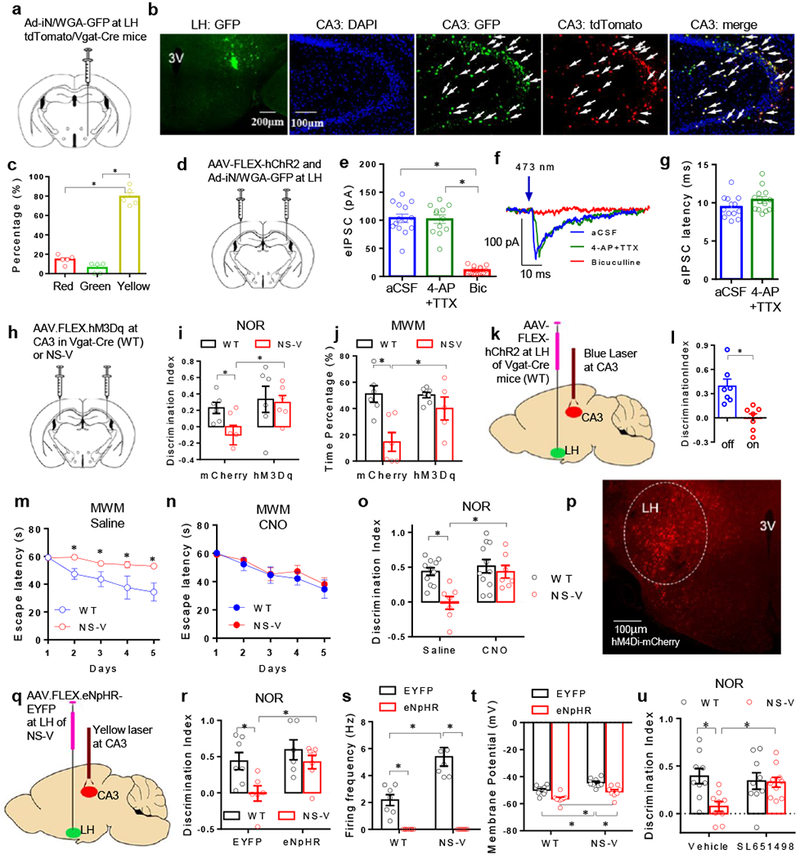Figure 5. The LHGABA to CA3GABA projection regulates memory and learning behaviors.

. (a) Anterograde tracing scheme. (b) Microscopy analysis of WGA-GFP at the primary injection site (LH) or projected site (CA3) in WT mice. 3V, 3rd ventricle. Green: WGA-GFP, Blue: DAPI, Red: Vgat positive neurons. Arrows indicate cells positive for both WGA-GFP and tdTomato. The experiment was repeated independently once with similar results. n=5 mice. Male 4 months-old mice were used. (c) Quantification of GFP-positive (green), tdTomato-positive (red), and double-positive (yellow) cells in CA3. One-way ANOVA analysis was used followed by post hoc Tukey test. n=5 mice. Male 4 months-old mice were used. (d) Scheme of intracranial injection of AAV-ChR2 in the LH. (e) The amplitude of eIPSCs of CA3GABA neurons in WT upon blue light stimulation of LHGABA neurons. Brain slices were recorded in pure artificial CSF (aCSF), or in the presence of 4-aminopyridine (4-AP, a potassium channel blocker) plus tetrodotoxin (TTX, a sodium channel blocker), or GABAA Receptor antagonist bicuculline (Bic). 2-way ANOVA analysis was used. Male 4 months-old mice were used. n=15 neurons/3 mice. (f) Representative traces of eIPSCs of CA3GABA neurons. (g) Latency of eIPSCs of CA3GABA neurons. 2-way ANOVA analysis was used. Male 4 months-old mice were used. n=13 neurons/3 mice. (h) Scheme of intracranial injection of AAV-FLEX-hM3Dq at CA3. (i) NOR test in hM3Dq-injected or mCherry-injected NS-V or WT (Vgat-Cre) mice with CNO treatment prior to the test. 2-way ANOVA analysis was used followed by post hoc LSD test. nWT_mCherry=6, nWT_hM3Dq=6, nNS-V_mCherry=6, nNS-V_hM3Dq=6 mice. Female 4 months-old mice were used. (j) MWM Probe test in hM3Dq-injected or mCherry-injected NS-V or WT (Vgat-Cre) mice with CNO treatment prior to the test. 2-way ANOVA analysis was used followed by post hoc LSD test. nWT_mCherry=6, nWT_hM3Dq=6, nNS-V_mCherry=6, nNS-V_hM3Dq=6 mice. Female 4 months-old mice were used. (k) AAV injection and laser probe implant scheme for optogenetic manipulation. (l) Novel Object Recognition (NOR) test with a blue laser stimulation in CA3 on mice infected with AAV-ChR2 at LH. Data were analyzed by two-tailed unpaired t test. nWT_light off=7, nWT_light on=7 mice. Male 4 months-old mice were used. (m-n) MWM test in the presence of CNO or saline treatment in NS-V or WT (Vgat-Cre) mice injected with AAV.FLEX.hM4Di at the LH. 2-way repeated ANOVA analysis was used followed by post hoc LSD test. nWT_Saline=7, nWT_CNO=7, nNS-V_Saline=8, nNS-V_CNO=7 mice. Male 4 months-old mice were used. (o) NOR test in hM4Di-injected NS-V or WT (Vgat-Cre) mice with or without CNO treatment. 2-way ANOVA analysis was used followed by post hoc LSD test. nWT_Saline=11, nWT_CNO=7, nNS-V_Saline=11, nNS-V_CNO=7 mice. Male 4 months-old mice were used. (p) Microscopy analysis of hM4Di-mCherry at the primary injection site. Male 4 months-old mice were used. The experiment was repeated independently once with similar results. (q) Scheme of AAV injection and laser probe implant for optogenetic manipulation. (r) NOR test of NS-V or WT (Vgat-Cre) mice with AAV.FLEX.EYFP or AAV.FLEX.eNpHR-EYFP injected at LH with yellow light on for all mice during the test. (Output power at the probe tip is around 7mW). 2-way ANOVA analysis was used followed by post hoc LSD test. nWT_EYFP=7, nWT_eNpHR=7, nNS-V_EYFP=6, nNS-V_eNpHR=7 mice. Male 4 months-old mice were used. (s-t) Spontaneous firing frequency and resting membrane potential of EYFP-infected or eNpHR-infected LHGABA neurons in response to yellow light in brain slices. 2-way ANOVA analysis was used. Male 4 months-old mice were used. Firing Frequency: nWT_EYFP=7 neurons/2 mice, nNS-V_EYFP=7 neurons/2 mice, nWT_eNpHR=8 neurons/2 mice, nNS-V_eNpHR=7 neurons/2 mice; Membrane Potential: nWT_EYFP=9 neurons/2 mice, nNS-V_EYFP=8 neurons/2 mice, nWT_eNpHR=9 neurons/2 mice, nNS-V_eNpHR=8 neurons/2 mice. (u) Novel Object Recognition (NOR) test after LH-specific infusion of a selective GABAA agonist SL651498. 2-way ANOVA analysis was used followed by post hoc LSD test. nWT_Vehicle=9 mice, nNS-V_Vehicle=9 mice, nWT_SL651498=9 mice, nNS-V_SL651498=10 mice. Male 4 months-old mice were used. Data is expressed as mean ± S.E.M. For detailed statistics results, see Supplementary Table 1. * P ≤ 0.05 is set as significance. Independently, the electrophysiological data was re-analyzed using the linear mixed-effects models (Supplementary Table S2).
